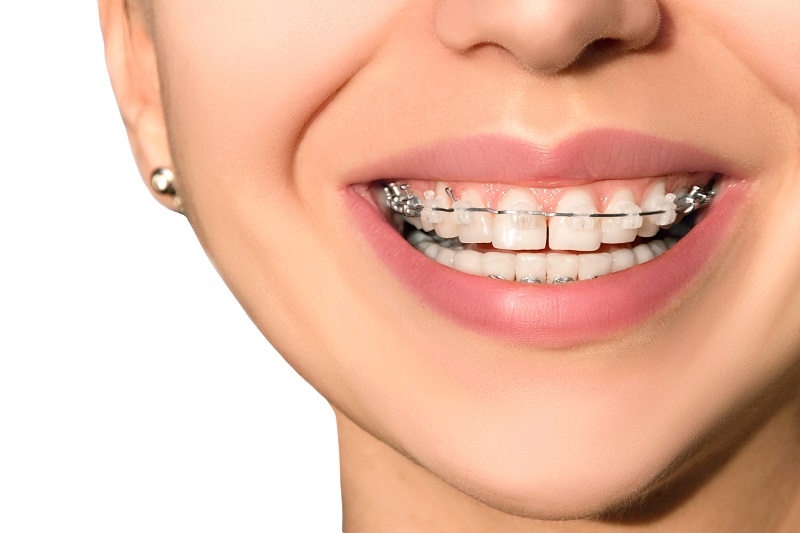A warm smile can work wonders, brightening up any room and leaving a positive impression on others. A perfect smile not only enhances your appearance but also boosts your confidence and self-esteem. While many people desire a flawless smile, some may find themselves dealing with misaligned teeth and various orthodontic issues. Luckily, dental braces offer an effective solution to straighten teeth and achieve that coveted perfect smile.
Understanding Dental Braces
Dental braces are orthodontic appliances designed to correct misaligned teeth and jaw alignment issues. They work by applying gentle pressure to gradually move teeth into their proper positions over time. Braces come in various types, including traditional metal braces, ceramic braces, lingual braces, and clear aligners like Invisalign.
Assessing Orthodontic Needs
Before embarking on a braces journey, it’s crucial to consult an orthodontist to assess your specific needs. A dental check-up will help identify any orthodontic issues and determine the most suitable treatment plan to achieve the desired results.
Factors Affecting the Cost of Braces
The cost of braces can vary widely based on several key factors that influence the overall treatment expense. Understanding these factors can help patients make informed decisions about their orthodontic journey.
- Type of Braces: The type of braces chosen plays a significant role in determining the cost. Traditional metal braces are generally the most budget-friendly option, while newer alternatives like ceramic braces, lingual braces, and clear aligners tend to be more expensive due to their advanced technology and aesthetics.
- Severity of the Dental Condition: The complexity of the orthodontic issue also affects the cost. Cases that require more extensive treatment and multiple adjustments over a more extended period may incur higher costs.
- Geographic Location: The cost of braces can vary based on the location of the orthodontic clinic. Factors such as local market trends, cost of living, and demand for orthodontic services in the area can influence pricing.
- Orthodontist’s Experience and Expertise: Highly experienced and reputable orthodontists may charge higher fees due to their expertise and track record of successful results.
- Additional Treatments: In some cases, additional treatments may be required before, during, or after braces treatment, such as tooth extractions, jaw surgery, or additional appliances. These supplementary treatments can impact the overall cost.
- Dental Insurance Coverage: Dental insurance coverage for braces varies among different insurance plans. Some plans may offer partial coverage or provide discounts, helping to reduce the out-of-pocket expenses.
- Financing Options: Many orthodontic clinics offer flexible payment plans or financing options to make braces more affordable for patients, spreading the cost over time.
Considering these factors and discussing treatment options and costs with an orthodontist will help individuals plan and budget for their braces journey effectively.
Cost Breakdown of Braces in Houston
Let’s explore the cost breakdown of different types of braces available in Houston:
- Traditional Metal Braces: These are the most common and least expensive option, with an average cost ranging from $3,000 to $7,000.
- Ceramic Braces: These are less noticeable than metal braces and may cost between $4,000 and $8,000.
- Lingual Braces: Placed on the back of the teeth, lingual braces can cost between $8,000 and $10,000 due to their customization.
- Invisalign Aligners: Clear aligners are nearly invisible and can cost between $3,000 and $8,000, depending on the complexity of the case.
Insurance Coverage and Financing Options
Many dental insurance plans provide coverage for orthodontic treatment, including braces. It’s essential to review your insurance policy to understand the extent of coverage available. Additionally, many orthodontic clinics offer flexible payment plans and financing options to make braces more affordable for patients.
Choosing the Right Orthodontist
Selecting the right orthodontist is crucial for a successful braces experience. Take the time to research various orthodontic clinics in Houston, read reviews and testimonials, and schedule consultations to find the best fit for your needs and preferences.
Understanding the Treatment Process
The braces journey begins with an initial consultation and examination. The orthodontist will create a customized treatment plan tailored to your specific dental needs. Regular adjustments and check-ups will be necessary to ensure progress and make any necessary modifications to the treatment plan.
Taking Care of Braces
Proper oral hygiene is essential when wearing braces. Brushing, flossing, and using mouthwash regularly help maintain good oral health throughout the treatment. Certain dietary restrictions, such as avoiding sticky or hard foods, also aid in protecting the braces and ensuring their effectiveness.
Managing Discomfort and Pain
It’s normal to experience some discomfort or soreness during the initial days of braces or after adjustments. Over-the-counter pain relievers and orthodontic wax can provide relief. Gradually, your mouth will adjust to the braces, and the discomfort will lessen.
Expected Duration of Treatment
The duration of braces treatment varies depending on the type of braces and the complexity of the case. On average, traditional metal braces may take 18 to 24 months, while Invisalign treatment can be completed within 12 to 18 months for most patients.
Maintaining Results After Braces
Once the braces are removed, it’s crucial to wear retainers as instructed by the orthodontist. Retainers help maintain the alignment achieved during the braces treatment and prevent teeth from shifting back.
Alternatives to Traditional Braces
Clear aligners like Invisalign and lingual braces offer discreet alternatives to traditional metal braces. Invisalign aligners are virtually invisible, while lingual braces are placed behind the teeth, making them less noticeable.
Celebrating Your Perfect Smile
A perfect smile brings more than just cosmetic benefits. It boosts self-confidence, improves social interactions, and enhances overall well-being. A radiant smile can open doors and leave a lasting positive impression on everyone you meet.
Investing in braces to achieve a perfect smile is a decision that can transform your life positively. While the cost may vary depending on factors like the type of braces and the complexity of the case, the long-term benefits are priceless. With various financing options and dental insurance coverage available, achieving your dream smile is within reach.
FAQs
- How often should I visit my orthodontist during braces treatment?
- Regular visits every 4 to 6 weeks are recommended for adjustments and progress checks.
- Will braces interfere with my daily activities?
- While there may be an adjustment period, braces should not significantly interfere with daily activities.
- Can I eat normally with braces?
- Certain foods may need to be avoided or modified during braces treatment to prevent damage.
- Is the Invisalign treatment as effective as traditional braces?
- Invisalign can be as effective as traditional braces for many cases, but it depends on individual circumstances.
- Will wearing braces be painful?
- Some discomfort is expected initially and after adjustments, but it is manageable and temporary.



